5 Best Grass Types for Austin, TX
BY NICKI DESTASI | MARCH 27TH, 2023 | AUSTIN, LAWN CARE, TEXASEven in the dead of winter, Austin temperatures average over 60 degrees, so it’s no wonder residents spend time in their yards year-round. Austinites love their barbeque and tacos, and enjoy eating them at parties in their luscious green backyard with friends and family. If you want an impressive lawn, choosing the right grass type is critical.
With Austin’s scorching summers and mild winters, warm-season grasses thrive. While warm-season grasses are common in the South, they go dormant in the winter. So along with the best warm-season grass types, we’ve included a cool-season grass that will keep your Austin lawn green in the winter.
Cool-Season Grass Vs. Warm-Season Grass
Based on the optimal growing climate, there are two types of grasses: Cool-season and warm-season. The primary difference is how they photosynthesize, each requiring different temperatures and environments. Here’s what you can expect from cool-season and warm-season grass types.
Cool-Season Grass
Typically, cool-season grasses grow in the North, preferring cold winters and mild summers. Heat is the main hurdle for cool-season grasses. As temperatures rise, they need more energy to stay green. Eventually, it becomes too hot for cool-season grass, and they’ll go dormant (turn brown).
Here are some things to consider with cool-season grasses:
- Growth begins when soil temperatures reach 40-45 degrees Fahrenheit
- Ideal growing temperature is 65-75 degrees Fahrenheit
- Best growth periods are early spring and fall (depending on the climate)
- Go dormant when the temperature is over 90 degrees Fahrenheit
- Require more water as temperatures rise
- Tolerate cold better than warm-season grasses
Warm-Season Grass
Warm-season grasses thrive in places like Austin with hot summers and mild winters. Winters can be stressful for warm-season grasses, so when temperatures drop, warm-season grasses go dormant.
Here are some things to consider with cool-season grasses:
- Growth begins when soil temperatures reach 60-65 degrees Fahrenheit
- Ideal growing temperature is 90-95 degrees Fahrenheit
- Best growth period is summer (depending on climate)
- Go dormant when temperatures are below 50 degrees Fahrenheit
- Require less water than cool-season grasses
- Tolerate drought better than cool-season grasses
5 Best Grass Types for Austin
Whether installing a new lawn or fixing an existing one, we’ve got four warm-season grasses and one cool-season grass that will transform your Austin lawn and keep it looking great year-round.
1. Bermudagrass
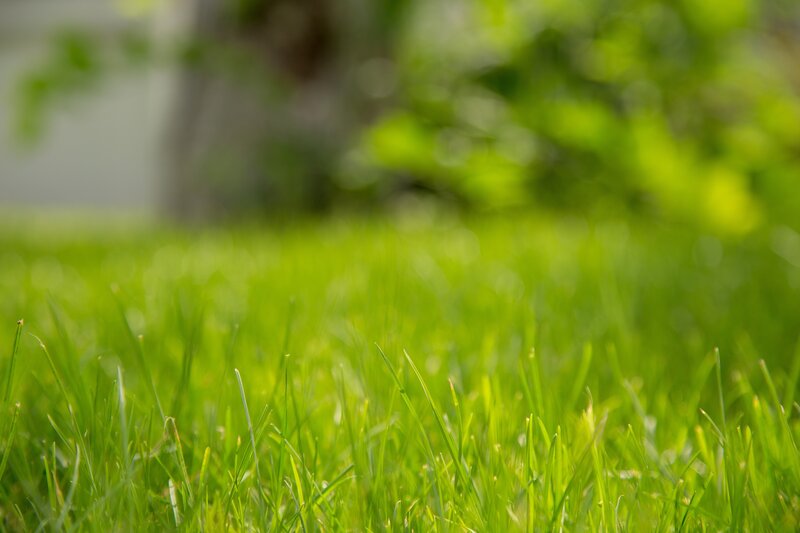
Photo Credit: Pexels
In Texas, bermudagrass is the most popular grass type. It’s popular due to its fast growth rate, durability in high-traffic areas, and high heat tolerance. Conversely, bermudagrass needs frequent mowing, has low shade tolerance, and tends to develop thatch.
Common in Austin and throughout the South, this light-green, fine-textured grass is used in home lawns, sports fields, and parks. Because of its deep roots and high growth rate, bermudagrass can be considered aggressive and high-maintenance. Even though those traits are great for durability, some homeowners prefer a hybrid mix to cut down on upkeep.
Classification: Warm-season grass
Spreads by: Stolons and rhizomes
Shade tolerance: Poor — needs full sun
Drought resistance: High
Foot traffic tolerance: High
Maintenance needs: Needs frequent mowing due to fast growth rate; develops thatch easily; needs regular fertilization
Mowing height: 1-2 inches
Potential for disease: Good resistance to disease, but susceptible to Spring dead spot, Root decline, Dollar spot, Leaf spot, Large patch; low resistance to insects and susceptible to, Bermudagrass mite, White grubs, Hunting billbug, Mole crickets, Cutworms, Armyworms, Sod webworms
Soil pH: 6-6.5
Soil type: Tolerates most soil types
Other notes: Bermuda spreads aggressively via its stolons (above-ground stems) and rhizomes (below-ground stems) and can out-compete many weeds. The downside is that it also can be a nuisance and is sometimes considered invasive. You’ll often find it has tunneled underground into flower beds and spread into neighboring lawns.
2. St. Augustinegrass
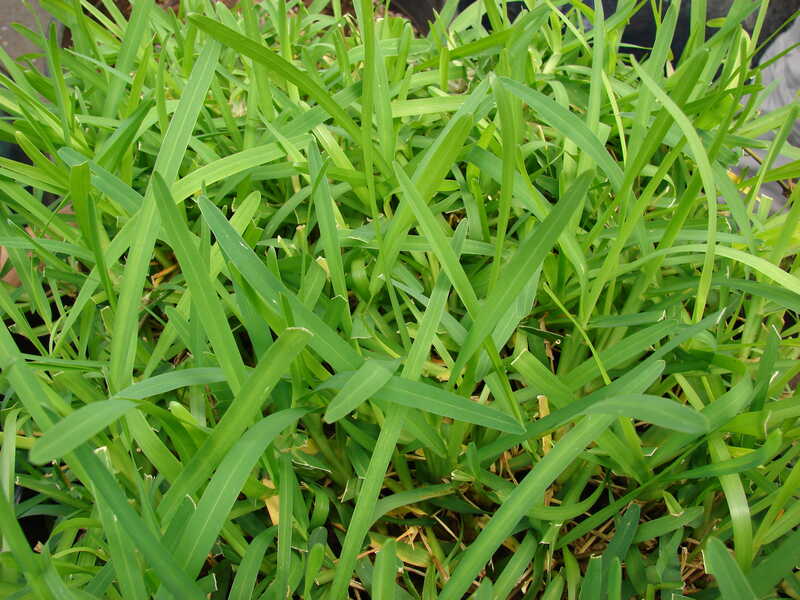
Photo Credits: Forest and Kim Starr / Flickr / CC BY 2.0
Austin has live oaks everywhere around the city, so St. Augustinegrass is a popular choice due to its high shade tolerance. This warm-season grass is easy to establish because of its fast growth rate. However, St. Augustinegrass doesn’t hold up well in high-traffic areas or an uncommonly cold Austin winter.
This thick, coarsely textured, dark green grass has moderate mowing requirements. It is susceptible to disease and pests, like chinch bugs. While St. Augustinegrass is native to the coastal areas and has high salt tolerance, it grows well in most soils. It’s not available as seed, only as sod, sprigs, or plugs.
Classification: Warm-season grass
Spreads by: Stolons
Shade tolerance: Moderate shade tolerance, among the highest of any warm-season grass; some cultivars are more shade tolerant than others
Drought resistance: Moderate
Foot traffic tolerance: Moderate
Maintenance needs: Moderate to high mowing frequency
Mowing height: 2.5-4 inches (mow dwarf varieties from 2.5-3 inches; standard cultivars from 3-4 inches; mow tall in shade)
Potential for disease: Moderate to high; prone to gray leaf spot, large patch, take-all root rot. Susceptible to some pests, including chinch bugs, cutworms, mole crickets, grass loopers, armyworms, webworms, grubs
Soil pH: 6-7.5
Soil type: Tolerates many soil types; prefers moderately fertile and moist (not waterlogged) soils; not a highly drought-tolerant grass; doesn’t tolerate soil. compaction.
Other notes: Native to coastal areas across the world and prefers moist soils and mild winters; will thrive in more inland areas provided growing conditions are met; good salt tolerance; will go dormant during winter in all but the southernmost regions
3. Zoysiagrass
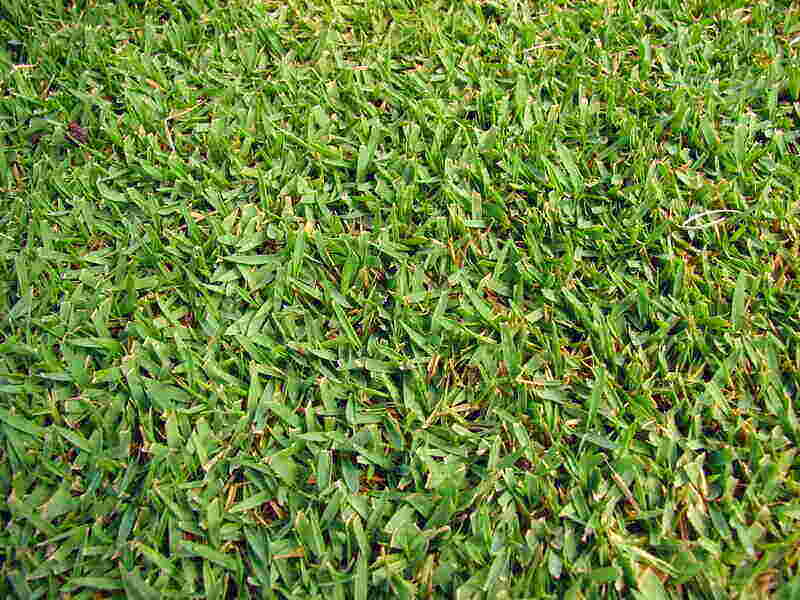
Photo Credit: Forest & Kim Starr / Wikimedia Commons / CC BY-SA 3.0
With about 11 cultivars available in Texas, Zoysiagrass is excellent for homeowners looking for a grass that tolerates drought, shade, cold, and heavy traffic. While Zoysiagrass has moderate mowing and water needs, it doesn’t need much fertilizer.
It comes in light- to medium-green varieties and has thin- and thick-bladed options. Zoysiagrass does well against pests and diseases, and its density crowds out weeds. Its beautifully soft texture makes it one of the best “barefoot grasses” available.
Although Zoysiagrass is available as seed, it’s recommended to use sod because of its slow growth rate.
Classification: Warm-season grass
Spreads by: Stolons and rhizomes
Shade tolerance: Tolerates light to moderate shade
Drought resistance: High
Foot traffic tolerance: High
Maintenance needs: Low to moderate nitrogen requirement; moderate mowing frequency.
Mowing height: 1-2.5 inches
Potential for disease: Not prone to disease and insects; good disease tolerance overall; can be susceptible to large patch, root decline, spring dead spot, rust, curvularia, and leaf spot; insects susceptibility includes Zoysiagrass mites, grubs, mole crickets, hunting billbugs, armyworms, chinch bugs, sod webworms
Soil pH: 6-6.5
Soil type: Well-draining, some cultivars more tolerant of a wide range of soils than others
Other notes: Moderately salt tolerant; cut with sharp mower blade; mow taller if the grass is in partial shade
4. Buffalograss
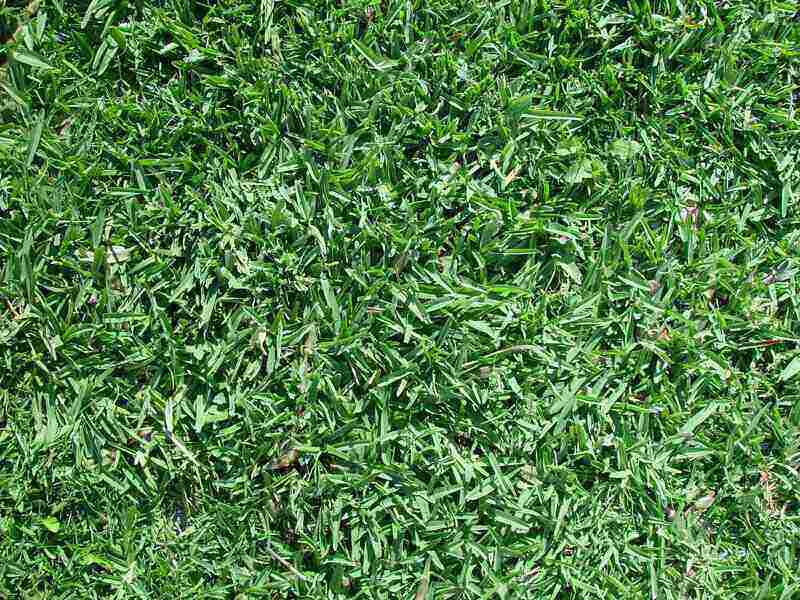
Photo Credit: Pixnio
Buffalograss is a warm-season grass that thrives in Austin’s dry climate. This cold and drought-tolerant grass loves the sun and is pest and disease resistant. However, it doesn’t stand up well against high traffic and shade.
This North American native grass is grayish green, and its slow growth rate means it does not need frequent mowing. Once established with seeds, sod, or plugs, it needs very little water or fertilizer. Its low growth density means thatch isn’t a problem for buffalograss, but weeds can be.
Classification: Warm-season grass
Spreads by: Stolons
Shade tolerance: Very low — best suited for full sun
Drought resistance: High
Foot traffic tolerance: Very low, but light use or rare heavy use is OK
Maintenance needs: Low mowing frequency — once per week or less
Mowing height: 2-4 inches or leave unmowed
Potential for disease: Good tolerance against diseases, but susceptible to bipolaris leaf spot; susceptible to some insects, including mealybugs, buffalograss webworms, mites, short-tailed crickets, buffalograss chinch bugs
Soil pH: 6.5-7.5
Soil type: Native soils, not sandy soils
5. Perennial Ryegrass
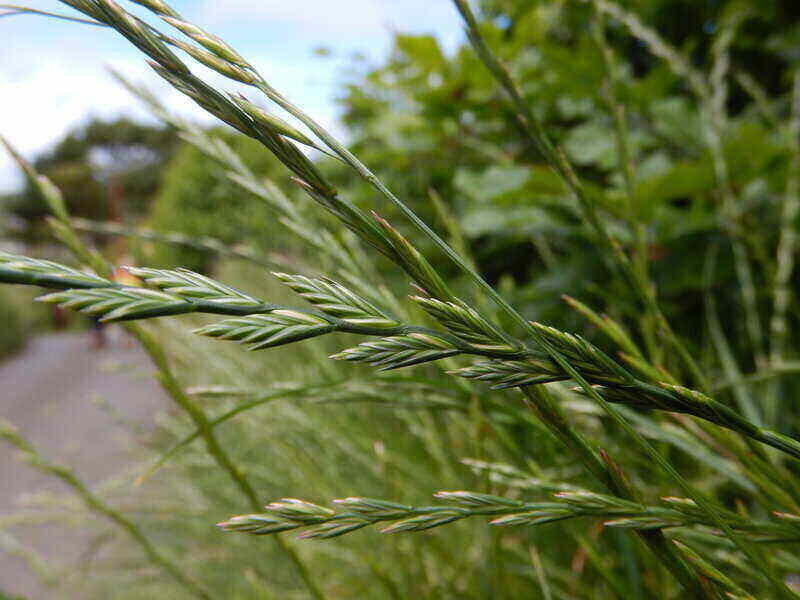
Photo Credit: Matt Levin / Flickr / CC BY-SA 2.0
While ryegrass has a perennial and annual variation, perennial ryegrass is more desirable for your Austin lawn. Perennial ryegrass is much softer, richer, and more vibrant than the course, light green annual ryegrass. This cool-season grass keeps your lawn lush and green in the winter but will need extra attention in the summer due to its low heat and drought tolerance.
Ryegrass is often mixed with other grasses to keep your lawn looking great year-round. While it’s susceptible to diseases like dollar spot and brown patch, it’s pest resistant. The sun-loving grass dislikes shade but establishes very quickly.
Classification: Cool-season grass
Spreads by: Bunch-type grass
Shade tolerance: Low — prefers full sun
Drought resistance: Low (summer dormancy in some areas)
Foot traffic tolerance: High but poor recuperative ability
Maintenance needs: Moderate mowing requirement, depending on cutting height (lower cutting heights require more frequent mowing)
Mowing height: 2-3 inches
Potential for disease: High, especially in areas with hot, humid summers; susceptible to gray leaf spot, dollar spot, brown patch, red thread, rust, pythium blight; insect susceptibility includes billbugs, greenbug aphids, chinch bugs
Soil pH: 6-7
Soil type: Good drainage, high fertility
Other notes: Most often mixed with Kentucky bluegrass and fine fescue in a cool-season mix; well known for its excellent striping ability, low mowing tolerance, and rapid germination rate (four to seven days). Needs moderate levels of fertilizer.
FAQ About Austin Grass Types
The best way to care for your lawn depends on the type of grass planted in your yard. However, you should follow a few universal tips and tricks for a healthy lawn. Mow at the right time: Mid-morning, about 9 a.m., or mid-afternoon, about 5 p.m. is the best time of the day to mow. Mowing after the dew dries prevents tearing the grass blades and mowing before the sun sets decreases the risk of disease. Leave grass clippings: Grass clippings provide essential (and free) nutrients for your lawn. However, if your grass is exceptionally long, collect them, or you risk growing mold or smothering your lawn. Keep mower blades sharp: Dull blades rip and tear your grass blades, causing a brown grass tip and a ragged-looking lawn. It also makes your grass more susceptible to disease.
In Austin, plant grass seed in March or April. Planting at this time gives the seed enough time to germinate before the summer scorches the lawn.
Bermudagrass is the most drought-tolerant grass type in Austin home lawns.
Choosing a Grass Type for Your Austin Landscape
While most warm-season grasses will do well on your Austin landscape, think about the following when making the best choice for you.
- Growth rate: How fast your grass grows will affect how quickly it establishes and the amount of maintenance required.
- Traffic tolerance: If you have little ones – the two or four-legged kind – consider grass that can withstand heavy foot traffic.
- Pest and disease resistance: Some grasses are more susceptible to pests and diseases.
Choosing a grass type can be overwhelming, but Austin lawn care professionals can help. Whether you want to install low-maintenance landscaping with things like native plants, or just want someone to maintain the lawn you have, Wikilawn has highly-rated experts that will turn your outdoor space into a lush, emerald oasis.
Main Image Credit: Smokeybear69 / Wikimedia Commons / CC BY-SA 4.0